How to Improve Gum Health After Periodontal Treatment
- Understanding Periodontal Treatment
- Why Gum Health Matters After Periodontal Treatment
- Post-Treatment Care for Better Gum Health
- Foods That Promote Healthy Gums
- An Effective Oral Care Routine for Gum Health
- When to Seek Professional Help
1. Understanding Periodontal Treatment
Periodontal treatment, also known as gum disease treatment, focuses on healing the gums and restoring the health of the soft tissue that supports your teeth. This treatment is essential when gum disease has progressed beyond the stage of simple gingivitis, leading to infection, inflammation, and potential damage to the bone and tissue around the teeth. After undergoing this treatment, proper care is crucial to prevent further complications and ensure long-term gum health.
2. Why Gum Health Matters After Periodontal Treatment
Gum health plays a crucial role in overall oral health. After periodontal treatment, it's important to continue maintaining healthy gums because poor gum health can lead to tooth loss, infections, and complications like heart disease. When your gums are healthy, they provide a strong foundation for your teeth, reducing the risk of further dental problems. Maintaining gum health after treatment ensures that the results of your periodontal care are long-lasting and effective.
3. Post-Treatment Care for Better Gum Health
After periodontal treatment, the recovery phase is critical to improving gum health. Here are a few essential post-treatment care tips:
- Follow your dentist’s advice: Always adhere to your dentist's instructions regarding oral hygiene and medications.
- Gentle brushing: Use a soft-bristled toothbrush and brush gently around the treated areas to avoid irritation.
- Rinse with salt water: Saltwater rinses can help soothe and clean the gums, promoting healing.
- Avoid smoking: Smoking can delay healing and increase the risk of infection, so it's best to refrain from smoking after treatment.
By following these steps, you can significantly improve your gum health and ensure that the effects of your periodontal treatment last longer.
4. Foods That Promote Healthy Gums
Your diet plays a significant role in maintaining healthy gums. After periodontal treatment, eating the right foods can promote gum healing and reduce inflammation. Some of the best foods for gum health include:
- Vitamin C-rich foods: Oranges, strawberries, and bell peppers help in collagen production and gum healing.
- Calcium-rich foods: Dairy products like milk and cheese help strengthen teeth and bones.
- Omega-3 fatty acids: Found in fatty fish like salmon and flaxseeds, omega-3s help reduce gum inflammation.
- Green leafy vegetables: Kale and spinach are high in antioxidants that support gum health and reduce plaque buildup.
Incorporating these foods into your diet can provide the nutrients your gums need to stay healthy after treatment.
5. An Effective Oral Care Routine for Gum Health
Maintaining a solid oral care routine is vital to preventing gum disease and maintaining gum health after periodontal treatment. Here's what an effective routine looks like:
- Brush twice a day: Use a fluoride toothpaste and a soft-bristled toothbrush to gently clean your teeth and gums.
- Floss daily: Flossing helps remove plaque and food particles between your teeth that brushing can’t reach.
- Use an antimicrobial mouthwash: Mouthwash can help kill bacteria and reduce the risk of infections in your gums.
- Regular dental check-ups: Visiting your dentist regularly for cleanings and exams will help you stay on top of your gum health.
By sticking to this routine, you’ll be able to maintain the improvements made during your periodontal treatment and keep your gums healthy for the long term.
6. When to Seek Professional Help
Even with the best at-home care, there may be times when you need to consult a professional. If you experience any of the following symptoms, it's essential to seek professional help:
- Gums that bleed easily or are swollen.
- Persistent bad breath that doesn’t go away with brushing or rinsing.
- Pain or discomfort in the gums that lasts more than a few days.
- Receding gums or loose teeth.
Early intervention can prevent further complications, so don't hesitate to reach out to your dentist or periodontist if you notice any of these signs.

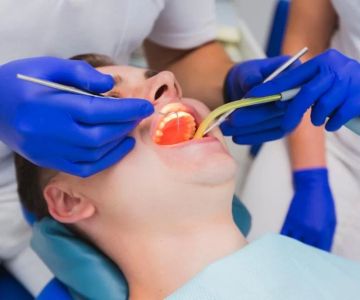
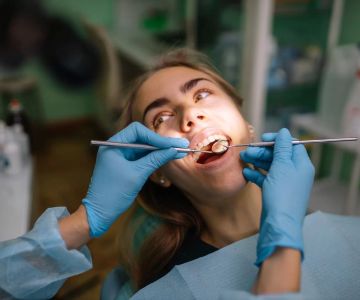


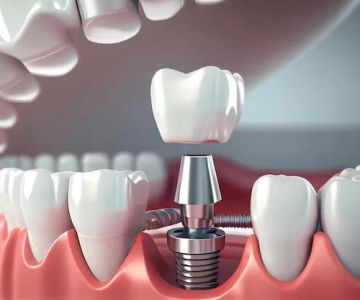

 Palatine Dental Associates4.0 (334 review)
Palatine Dental Associates4.0 (334 review) Nak4 Orthodontics Arlington Heights4.0 (253 review)
Nak4 Orthodontics Arlington Heights4.0 (253 review) Leonard L Patella, DDS0.0 (0 review)
Leonard L Patella, DDS0.0 (0 review)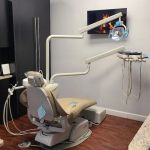 Southern Smiles Newnan5.0 (449 review)
Southern Smiles Newnan5.0 (449 review)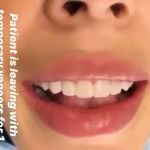 NLV Dental Group4.0 (18 review)
NLV Dental Group4.0 (18 review) Virginia Family Dentistry Brandermill - Woodlake4.0 (724 review)
Virginia Family Dentistry Brandermill - Woodlake4.0 (724 review) The Importance of Oral Health Education During Pregnancy for a Healthy Pregnancy
The Importance of Oral Health Education During Pregnancy for a Healthy Pregnancy Best Tips for Brushing Your Teeth Properly for Healthy Gums: Essential Techniques for Oral Health
Best Tips for Brushing Your Teeth Properly for Healthy Gums: Essential Techniques for Oral Health Why Skipping Dental Checkups Can Lead to Bigger Oral Health Problems
Why Skipping Dental Checkups Can Lead to Bigger Oral Health Problems Advantages of Porcelain Dental Restorations
Advantages of Porcelain Dental Restorations How Can Diabetes Cause Tooth and Gum Problems? Preventing and Managing Oral Health Issues
How Can Diabetes Cause Tooth and Gum Problems? Preventing and Managing Oral Health Issues Healthy Habits for Promoting Good Oral Health and Hygiene: Tips for a Healthy Smile
Healthy Habits for Promoting Good Oral Health and Hygiene: Tips for a Healthy Smile